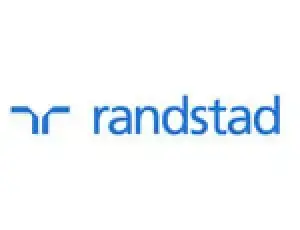
Get a Quote
Get a Quote and Find Services to Fit Your Needs 50000+ Satisfied Clients
5000+ Licenses & Registration
15 Branches across India
75 Years + Combined experience
Satisfied Clients
Services
Years Combined Experience
Get Started!

























SACFA is short for Standing Advisory Committee on Frequency Allocation (India). It provides recommendation of frequency reallocation and creates a frequency allocation plan. In order to run a radio station or anything similar within a certain frequency, the service provider has to get a SACFA clearance certificate.
.jpg)
Those who want to broadcast their channels at a certain frequency (radio stations), or conduct operations that can only be done within certain frequencies, have to get a SACFA clearance certificate before they get the final approval to start their business. These include:
Note: Getting SACFA clearance is just the part of the process of getting authorization to conduct the above-mentioned operations. SACFA clearance certification begins after the operator gets the letter of intent from the government bodies issuing the aforementioned licenses.
SACFA Members
Standing Advisory Committee on Radio Frequency Allocations is a high-level committee chaired by the chairman of the Telecom Commission, Department of Telecommunications.
The members of the SACFA committee include such as:
2.jpg)
The WPC wing of the DoT secretarially aids the SACFA committee. Also, Joint Wireless Adviser, WPC wing, is the member-secretary of the Committee. Thirdly, the Executive Director-Telecom Development ( ED-TD) Railway Board is a member of SACFA, representing the Ministry of Railways.
Functions of the SACFA committee
.jpg)
The following are the issues on which the SACFA committee tables its suggestions:
The SACFA clearance certificate is obtained after getting 'no objection' from SACFA members. So, these SACFA members have to perform a detailed technical evaluation. Subsequently, they have to obtain evaluations from their field units. Hence, these technical evaluations are done primarily for
5.jpg)
SACFA procedure is as follows:
7.jpg)
Tower Installation process
You can file for the SACFA clearance certificate for installing the tower by submitting self-declaration or automated time-bound approvals on the SaralSanchar Portal of DoT. The procedure of SACFA clearance for tower installation is as follows:
File the SACFA cases indicating the following technical parameters on SaralSanchar Portal of DoT:
Furnish and upload the following documents along with the application:
Registrationwala provides complete assistance to you with matters concerned with SACFA approval. Our services include:
1. Application filing
2. Document drafting
3. Department follow-up
Simply put, we take all matters concerning SACFA registration on your behalf. Reach out to us for more information.

★ ★ ★ ★ ★
I very much appreciate the fact that you guys possess tremendous knowhow of private limited company incorporation. You have exhibited professional and respectful manner towards my query and I would seriously recommend you guys to all the folks looking for outstanding business services.

★ ★ ★ ★ ★
Thanks to their support, I got my trademark successfully. I highly recommend their services for anyone needing help with their intellectual property. The person assigned to me was very cooperative and helpful.

★ ★ ★ ★ ★
Thanks to their support ragistrationwala team, I got my IP-1 license successfully and special thanks to Miss.Kanishka for your great and timing support !!!!!! I have archived my goal one step forward... Thanks for the entire team....

★ ★ ★ ★ ★
Really helped a lot in getting my both VNO licenses. Great experience working with the team and very humble team, thanks for providing the vno license on time.

★ ★ ★ ★ ★
I had a good time working with Registrationwala. Good team. I would recommend their services to others.

★ ★ ★ ★ ★
It was extremely great service of Registrationwala consulting firm, and this firm is providing the best services and worry about the client's required services along the client's satisfaction.

★ ★ ★ ★ ★
Superb Experince! Within no time the trademark registration was on.Highly professional team. I am very much Impressed with the prompt response and efficiency.Thank you.

★ ★ ★ ★ ★
We had taken ISP license from registration wala and the supporting person is very helpful to taken that license his communication and his work is satisfactory and thanks for those services

★ ★ ★ ★ ★
I sincerely appreciate your prompt support in helping me get the access license so quickly. Your professionalism and efficiency are truly commendable. Thank you for going above and beyond to assist me. Keep up the great work!